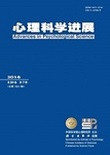Compulsivity is a core neuropsychological element connected to perseverations and persistent behaviors that are continued in the face of adverse consequences. It has been assumed that breakdown of the regulatory mechanism for compulsive behaviors in the brain might be a fundamental cause of drug addiction. Although addiction studies in recent decades have manifested a key role of the reward system (i.e., the meso-cortico-limbic circuitry) in addictive behaviors, little is known about the role of compulsivity per se and the neural substrates of the prefrontal cortex-anti-reward system circuitry implicated in the development of drug addiction. Particularly, there was lack of a systematic investigation of compulsivity linked to drug addiction, and family studies and convergent evidence from non-stimulants drugs (e.g., opiates) were rare. This project thus aimed to investigate the compulsivity profiles of heroin addicts and their healthy drug-free first-degree relatives (i.e., siblings), compared to healthy controls, from a family-risk perspective of addictive behaviors. A series of neurocognitive tasks, together with event-related potentials (ERPs) and neuroimaging techniques (e.g., functional magnetic resonance imaging, fMRI), would be employed to assess compulsivity facets and the potential neurophysiological correlates among these participants, aiming to probe into the hereditary feasibility and neural substrates of compulsivity in drug addiction. Expectantly, this project might be conducive to future discernment of potential medical or non-medical intervention targets for addictive disorders. This project would be mainly consisted of three human studies: (1) The purpose of the Study 1 was to compare the neurocognitive profiles of compulsive characteristics between heroin addicts, their healthy drug-free first-degree relatives (i.e., siblings), and irrelevant healthy controls, using the Padua Inventory of Obsessive Compulsive Disorder Symptoms (PI-WSUR), the Stop-Signal Task, the Stroop Task, the Intradimensional/Extradimensional set-shifting task (IDED), and the Probabilistic Reversal Learning Task (PRLT); (2) From the neurophysiological level, the Study 2 would test the associations of cognitive event-related potentials (ERPs) correlates (e.g., N200, P300) with compulsivity measured by several neurocognitive tasks, including the Go/No Go Task and the Probabilistic Reversal Learning Task (PRLT), among the heroin addicts, their healthy drug-free first-degree relatives (i.e., siblings), and irrelevant healthy controls; and (3) The Study 3, combining neurocognitive tasks (i.e., the Go/No Go Task, the Probabilistic Reversal Learning Task, and the Analogic Social Exclusion Task) with structural and functional Magnetic Resonance Imaging (fMRI), was targeted at exploring the neural substrates of the prefrontal and anti-reward systems involved in heroin addiction, such as the loops of the lateral orbitofrontal cortex-dorsal striatum and the medial orbitofrontal cortex-ventral striatum/central nucleus of the amygdala, between heroin addicts, their healthy drug-free first-degree relatives (i.e., siblings), and irrelevant healthy controls. Based on these studies, this project expected to improve the understandings of the susceptibility of compulsive traits and neural substrates of the prefrontal and anti-reward systems implicated in drug addiction. Generally, it was hypothesized that main neurocognitive deficits associated with compulsivity might be potential markers for heroin use disorder, that is, as the possible familial risk factors of compulsivity, these neurocognitive deficits would be increased not only in the heroin addicts, but also in their healthy drug-free first-degree relatives (i.e., siblings), compared with the irrelevant healthy controls. Furthermore, on the neurological bases, the abnormalities of certain neurophysiological components (e.g., N200、P300) tested by the event-related potentials (ERPs), would be expected to be highlighted both in the heroin addicts and their healthy drug-free first-degree relatives (i.e., siblings). Most importantly, the structural and functional neural abnormalities in the prefrontal and anti-reward systems, including the loops of the dorsolateral prefrontal cortex, the dorsal anterior cingulate cortex, the right inferior frontal gyrus to the dorsal striatum as well as the ventral prefrontal cortex and the orbitofrontal cortex to the central nucleus of the amygdala, which are mostly linked to cognitive control, stress responses and emotional control functions, might be involved in the poor performance of these compulsivity-related neurocognitive tasks (i.e., the Go/No Go Task, the Probabilistic Reversal Learning Task, and the Analogic Social Exclusion Task). Thus, this project would be of great help for detecting potential biological markers and intervention targets for addictive disorders.




